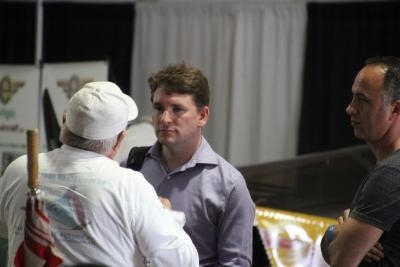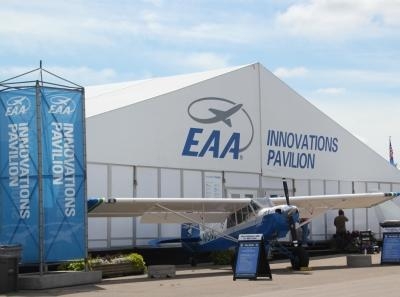Innovation Happens With A Healthy Disregard For The Impossible
By Maxine Scheer
Anyone who has made fun of the value of analyzing moon rocks better think twice. There are new careers and “astronomical” economies expected to emerge from commercialization of space travel and the innovation that happens when failures are programmed as a cost of doing business. Chris Lewicki, President and Chief Mining Officer of Planetary Resources, took time to come to the new Innovations Pavilion at EAA AirVenture 2013 and present the emerging industry of mining asteroids.

The science and business behind acquiring precious metals and other resources that are used extensively in world-wide manufacturing economies is now aligned with building the capacity to prospect asteroids in space. “We are looking at a trillion dollar business opportunity doable with existing technology,” said Lewicki, as he introduced the mission and business case for Planetary Resources.
Lewicki estimates governments throughout the world spend, on average, about $100 million a year on scientific research associated with asteroid exploration. Why and for what? Platinum and other metals such as iron, nickel and cobalt that exist on thousands of asteroids located in near earth orbit. “One 500 meter platinum rich asteroid is estimated to have more platinum than the quantity mined on earth to date. There are literally astronomical amounts,” said, as he outlined numerous slides with statistics on a growing body of knowledge from space observation.
Another important resource also exists in space. “You heard it here first,” as Lewicki introduced water’s uses in space transportation, including protection from solar radiation and fuel for space transportation.
Lewicki described parallels between mining in space and on earth, “spending in the same range as companies spend today, say $25-$50 million, to find sources on the oceans’ floors.” He also described the long-term commitment of the company’s investors, but also noted technologies are coming out of Planetary Resources, intended to create near term revenue.
Full execution of going to space, building the mining systems and bringing the contents back to earth is expected to be in the 15-20 year range, accelerated by the commercialization of sub-orbital and space travel, as Lewicki referenced the accomplishments of EAA member Burt Rutan in Scaled Composite’s “Space Ship One”, and by the SpaceX Dragon.

The first phase of asteroid mining was described as “observation”, with vehicles called Arkyd Systems, weighing approximately 28 pounds at a cost of an estimated $4 million each, launched into near earth orbit in swarms. “There are about 250 folks working on Curiosity,” said Lewicki, “we expect about five people will be needed for each one of our missions.”
Mining equipment has not yet been designed, but is in development with corporate partners. “3-D printing is one of the early technologies,” said Lewicki, “I think it is inevitable there will be factories located in space for creating the brick and mortar.” Resource extraction is would be assisted using robotic technologies. Lewicki also described technologies associated with resource recovery and referenced NASA initiatives.
Public outreach is also part of the business model. Lewicki drew examples from a recently completed crowdfunding campaign where Planetary Resources raised over $1.5 million on Kickstarter, giving access to Arkyd as a public space telescope. He also described STEM education initiatives, and made comparisons to Zooniverse, where the public is engaged in space observation and discovery.
Lewicki also came to AirVenture 2013 to prospect new hires. “We are building the Arkyd Systems just outside of Seattle and we are hiring,” said Lewicki, “we need folks who can see the possible from the impossible”. He outlined a number of professional areas to emphasize the point that applicants do not have to be rocket scientists.
 NTSB Prelim: Piper PA-23
NTSB Prelim: Piper PA-23 Classic Aero-TV: One Mans Vietnam
Classic Aero-TV: One Mans Vietnam NTSB Final Report: Capella Aircraft Corp FW1C50
NTSB Final Report: Capella Aircraft Corp FW1C50 Classic Aero-TV: Timber Tiger Touts Curtiss Jenny Replicas
Classic Aero-TV: Timber Tiger Touts Curtiss Jenny Replicas ANN's Daily Aero-Term (07.04.25): Performance-Based Navigation (PBN) [ICAO]
ANN's Daily Aero-Term (07.04.25): Performance-Based Navigation (PBN) [ICAO]




